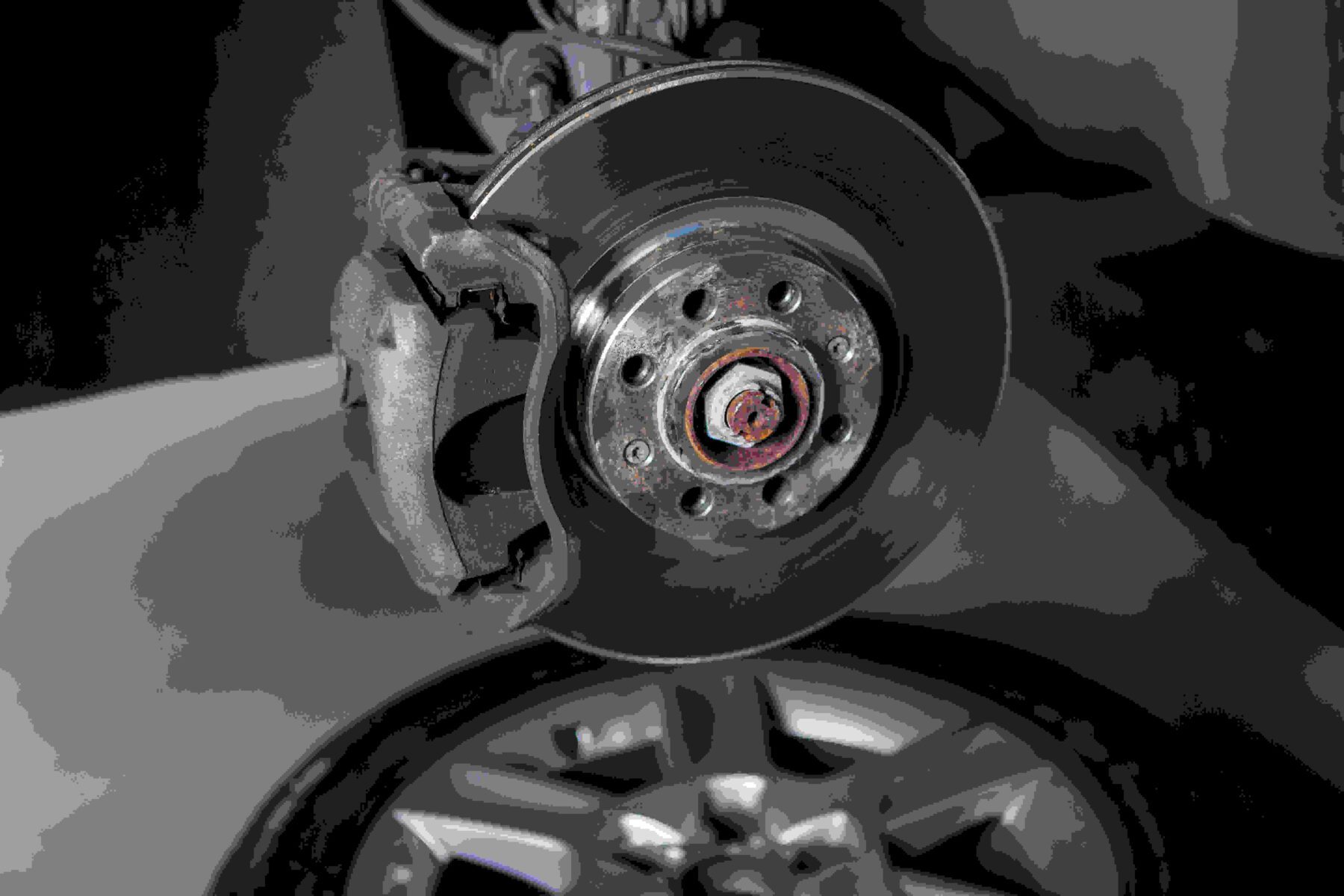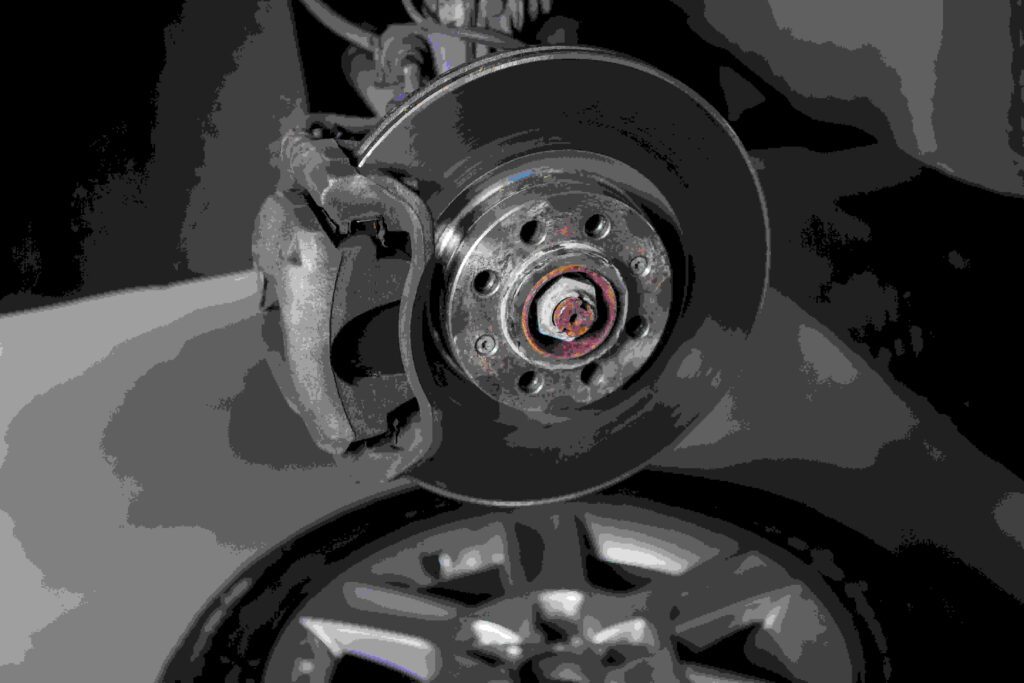If your car brakes vibrate at high speeds, the possible causes could be warped brake rotors or uneven brake pad wear. Resurfacing or replacing brake rotors and pads can solve the issue.
Experiencing vibrations while driving due to faulty brakes can be concerning and may indicate a safety hazard. We delve into the reasons behind brakes vibrating at high speeds and explore effective solutions to address the problem. Understanding the potential culprits causing the vibrations and knowing how to fix them can help ensure a smoother and safer driving experience.
Let’s explore the common causes and practical fixes for car brakes vibrating at high speeds.
Causes Of Car Brakes Vibrating
Experience car brakes vibrating at high speeds? Common causes include warped rotors, worn brake pads, or suspension issues. Ensure to have a mechanic inspect and potentially replace any worn components for a smoother drive.
Warped Brake Rotors
Worn Brake Pads
Experiencing vibrations when applying brakes at high speeds can be a nerve-wracking experience for any driver. Not only is it unsettling, but it can also compromise the safety and performance of your vehicle. Understanding the causes behind car brakes vibrating is crucial for proper maintenance and taking appropriate action. The two primary factors contributing to this issue are warped brake rotors and worn brake pads.
Warped Brake Rotors
Warped brake rotors, also known as brake disc distortion, are a common cause of vibrations when braking at high speeds. This occurs due to excessive heat generated during intense braking, causing the rotors to warp. The uneven surface denies the brake pads a smooth contact point, leading to vibrations. Several factors contribute to rotor warping, such as improper installation, aggressive driving, heavy loads, or prolonged braking sessions.
To prevent warped brake rotors, it’s essential to practice regular maintenance and adopt safe driving habits. Additionally, avoid applying excessive force to the brake pedal, especially during extended downhill descents. Ensuring the brake rotors are within the manufacturer’s specifications for thickness and flatness is crucial to mitigating the risk of vibrations caused by warping.
Worn Brake Pads
Worn brake pads can also be to blame for brake vibrations. Over time, brake pads wear down due to friction, resulting in an uneven surface. The uneven surface then prevents the brake pads from making consistent contact with the rotors, leading to vibrations. This issue is more prominent at higher speeds, where the friction between the brake pads and rotors is increased.
To detect worn brake pads, keep an eye out for warning signs such as squealing or grinding noises when applying brakes, reduced brake responsiveness, or a noticeable decrease in braking power. To prevent brake pad wear and subsequent vibrations, it’s essential to adhere to a regular maintenance schedule, ensuring prompt replacement of worn-out brake pads.
Regularly inspecting brake pads and replacing them when necessary not only enhances braking performance but also reduces the risk of accidents caused by excessive vibrations. It’s important to consult a professional mechanic to assess the condition of your brake pads and determine the appropriate replacements.
Symptoms Of Brake Vibrations
Experiencing brake vibrations while driving at high speeds may indicate issues such as warped brake rotors or worn-out brake pads. These symptoms can lead to unsafe driving conditions and should be promptly inspected by a professional mechanic to ensure safe braking performance and prevent further damage to the vehicle.
Symptoms of Brake VibrationsH3 headings must be in HTML syntax.Steering Wheel ShakesAt high speeds, you may notice strong vibrations in the steering wheel. This could be a sign of brake issues affecting your vehicle’s performance. It’s crucial to address this problem promptly to ensure optimal safety.Pulsating Brake PedalA pulsating brake pedal is an alarming symptom of brake vibrations. When you press the brake pedal, and it exhibits pulsating movements, it signals that complications within the braking system may be leading to this unsettling experience.Brake Vibrations at high speeds are an indication of potential underlying issues that require immediate attention. When it comes to the symptoms of brake vibrations, it’s crucial to identify them accurately to ensure a safe driving experience. Let’s dissect the common signs that indicate brake vibrations.Some of the common symptoms of brake vibrations include:– Shaking steering wheel: When you feel vibrations or shaking in the steering wheel while applying the brakes, it’s a clear indicator of potential brake issues. – Pulsating brake pedal: A pulsating brake pedal can signify irregularities within the braking system, which can compromise the vehicle’s safety on the road.It’s vital to pay attention to these warning signs and address them promptly to maintain a safe driving environment.Impact Of Brake Vibrations
Reduced Braking Performance
Vibrating car brakes lead to reduced braking power affecting safety.
Uneven Tire Wear
Vibrations cause uneven tire wear, increasing maintenance needs.

Credit: www.autotechiq.com
Diagnosing Brake Vibrations
Brake vibrations can be a concerning issue, especially at high speeds. It’s crucial to diagnose the root cause accurately to ensure your safety on the road. Understanding the reasons behind brake vibrations can help you take the necessary steps to address the issue promptly.
Visual Inspection
Visual inspection of your brake system is the first step in diagnosing vibrations. Check for uneven wear, cracks, or warped rotors. Look for any visible damage that may be affecting the brake performance.
Measuring Brake Rotor Runout
To determine brake rotor runout, use a dial indicator to measure the amount of lateral movement in the rotor. Excessive runout can lead to vibrations. Correct rotor runout to prevent brake issues.
Fixing Warped Brake Rotors
When it comes to fixing warped brake rotors, it is crucial to understand the root of the problem before determining the best course of action. Vibrating car brakes at high speeds can be a sign of warped brake rotors, which occur due to uneven wear and excessive heat. Here are the common fixes for this issue:
Brake Rotor Resurfacing
Brake rotor resurfacing involves machining the rotor to remove the uneven surface and restore a flat, smooth braking surface. This process is typically performed at a repair shop using specialized equipment. It is essential to ensure the rotor thickness meets the minimum requirement after resurfacing to guarantee safe braking performance.
Brake Rotor Replacement
If the brake rotor has worn beyond the specified limits or shows signs of severe damage, it may be necessary to replace the rotor altogether. Rotor replacement ensures a completely smooth and evenly thick braking surface, providing optimal braking performance and safety on the road.

Credit: heartautocare.com
Addressing Worn Brake Pads
If your car brakes are vibrating at high speeds, it could be due to worn brake pads. Addressing this issue promptly is crucial for your safety and the health of your vehicle. Schedule an inspection with a certified mechanic to determine if your brake pads need to be replaced or if there are other underlying issues causing the vibrations.
Brake Pad Replacement
When it comes to addressing worn brake pads, the most common solution is to replace them. Brake pads are crucial components of a car’s braking system, responsible for creating the necessary friction to slow down or stop the vehicle. Over time, they can wear out due to consistent use, high temperatures, or even harsh driving conditions. When you start to experience vibrating brakes at high speeds, it is a clear indication that your brake pads are worn and need replacement.Brake pad replacement is a relatively simple process that can be done at home or by a professional mechanic. While the exact steps may vary depending on your car’s make and model, the general procedure remains the same. Here’s a breakdown of how to replace worn brake pads:- Begin by safely elevating the vehicle using a jack and securely placing it on jack stands.
- Remove the wheels on the affected axle to gain access to the brake caliper.
- Inspect the brake caliper for any signs of damage or wear. If needed, consider servicing or replacing the caliper as well.
- Using a suitable wrench or socket, remove the brake caliper bolts to detach it from the rotor.
- Once the caliper is removed, carefully extract the worn brake pads from their housing.
- Before installing the new brake pads, ensure that the caliper piston is properly retracted using a C-clamp or brake piston tool.
- Apply a small amount of brake grease to the backside of the new brake pads to prevent squeaking.
- Securely insert the new brake pads into their designated housing within the caliper.
- Reattach the brake caliper to the rotor and tighten the caliper bolts to the manufacturer’s specifications.
- Replace the wheels and lower the vehicle back onto the ground.
Brake Caliper Service
In some cases, addressing worn brake pads may not be enough to resolve the vibrating issue at high speeds. If your brake pads have been neglected for an extended period or if you notice uneven wear, it may also be necessary to service your brake calipers.Brake calipers are responsible for housing the brake pads and facilitating their movement against the rotor. Over time, these calipers can become dirty, corroded, or seized, affecting their ability to function correctly. A malfunctioning brake caliper can cause uneven braking force, leading to brake vibrations.To service your brake calipers, follow these steps:- Safely elevate the vehicle and remove the wheels to gain access to the calipers.
- Inspect the brake calipers for any signs of damage, corrosion, or sticking.
- Using a suitable brake cleaner, thoroughly clean the caliper, removing any dirt, debris, or rust.
- If the caliper is seized or corroded, consider replacing it with a new or rebuilt caliper.
- Ensure that the caliper slides or pins are well-lubricated using a suitable brake lubricant.
- Reinstall the brake pads into the clean and lubricated caliper housing.
- Securely reattach the caliper to the rotor and tighten the caliper bolts to the manufacturer’s specifications.
- Replace the wheels and lower the vehicle back onto the ground.
Other Brake Vibrations Causes
When it comes to car brakes vibrating at high speeds, there are various causes that can lead to this issue. In addition to warped rotors and worn-out brake pads, there are other factors that can contribute to brake vibrations. Let’s take a closer look at some of these causes and how they can be addressed.
Loose Brake Caliper
A loose brake caliper is one potential cause of brake vibrations. The brake caliper is responsible for holding the brake pads in place and applying pressure to the rotors. If it becomes loose, it can cause the brake pads to make inconsistent contact with the rotors, resulting in vibrations.
Uneven Tire Pressure
Uneven tire pressure can also lead to brake vibrations. When the tire pressure is imbalanced across different tires, it can cause uneven braking performance. This imbalance can create vibrations that are felt through the brake pedal when braking at high speeds.
Preventive Measures
Protecting your car brake system from vibrating at high speeds involves various preventive measures. By taking the following steps, you can ensure a smooth and safe driving experience.
Regular Brake Maintenance
Regular maintenance is crucial for preventing brake vibrations at high speeds. Inspect brake pads, rotors, and calipers at regular intervals to ensure they are in good condition. Additionally, maintain proper brake fluid levels and replace it as per your vehicle’s recommended schedule.
Avoiding Extreme Braking
Avoid aggressive braking, which can lead to overheating and warping of brake components. Instead, maintain a steady speed and anticipate stops to brake gently. This will prevent unnecessary stress on the brake system, reducing the likelihood of vibrations at high speeds.

Credit: heartautocare.com
Conclusion
Addressing vibrating car brakes at high speeds is crucial for safety. Regular maintenance and consultation with a professional can help detect and solve underlying issues. Whether it’s correcting rotor warping, brake pad wear, or alignment problems, timely intervention ensures a smooth and secure driving experience.
Prioritizing brake health is key to a safe journey.